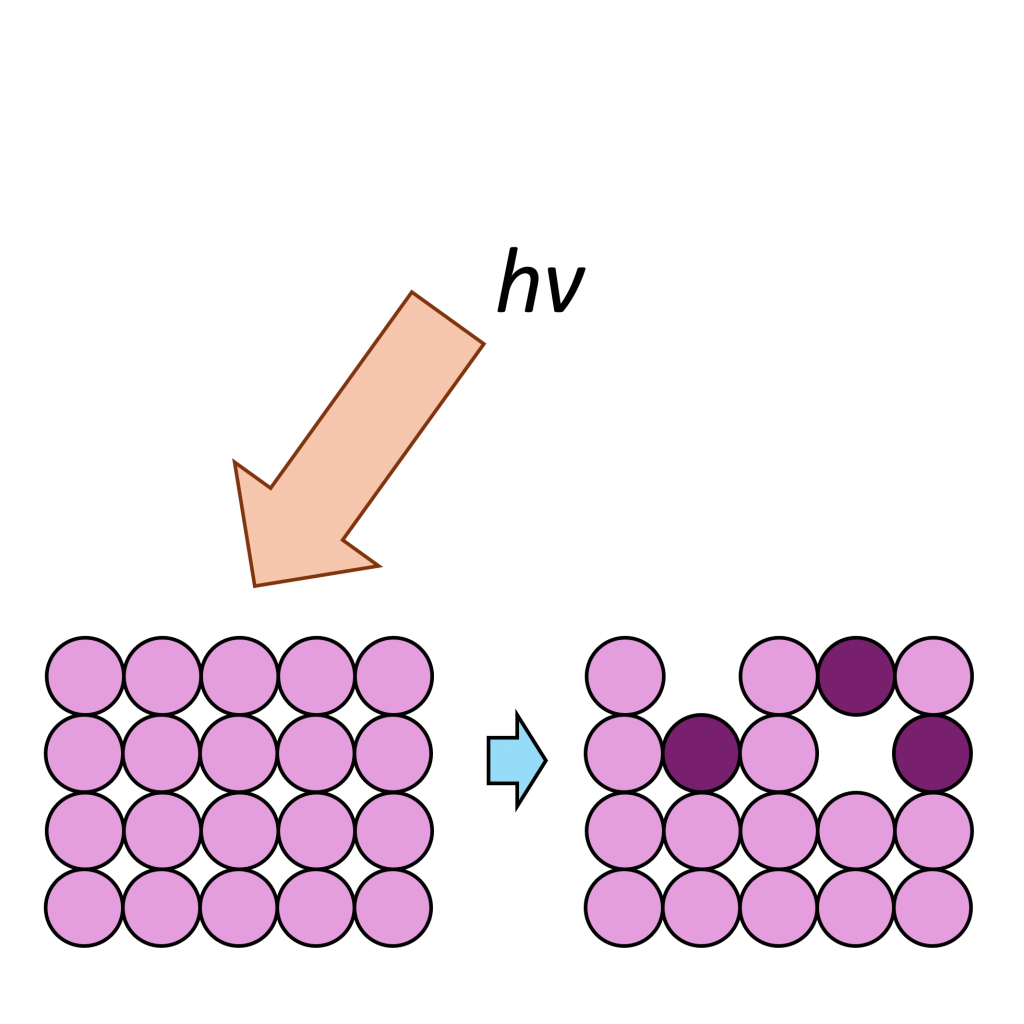
Nitrogen
Doublet Separations
- No non S-orbital emissions
The Energies Listed are Binding Energies!
- N 1s: 399 eV
The Energies Listed are Binding Energies!
Sb is primarily analyzed via the 3d orbital
- Ga LMM b (Al source) (390 eV)
- Mo 3p (393 eV)
- Y 3s (395 eV)
- Yb 4p (396 eV)
- Tb 4s (398 eV)
- Sc 2p (398 eV)
- Ta 4p (405 eV)
- Cd 3d (405 eV)

Energies listed are Kinetic Energies!
N KLL: ~ 374 eV
The Energies Listed are Binding Energies!
| Species | Binding energy / eV | Charge Ref | Ref |
| Amine -NH2 | 399.4 | C 1s (285 eV) | 1 |
| Amide -NHCO | 399.9 | C 1s (284.5 eV) | 2 |
| Nitro -NO2 | 404-6 – 405.1 | Au 4f (83.8 eV) | 3 |
| Nitro -NO2 (Pyrene) | 406.2 | C 1s (285 eV | 1 |
| Nitrate -X.NO3 | ~ 407.3 | C 1s (284.6 eV) | 4 |
| Si3N4 | 397.7 | C 1s (285 eV) | 5 |
| Pyrrole | 400.3 – 400.4 | C 1s (285 eV | 1 |
| Pyridine | 399.7 – 399.9 | C 1s (285 eV | 1 |
Nitrogen is analysed using the N 1s peak, which is a simple, symmetrical emission with a Voight-type shape.
Polymeric systems are known to suffer potential damage and reduction under X-ray illumination in UHV – so always be sure to record a scan at the start and end of an experiment when measuring new material types.[6,7]
Carbon Nitrides
Carbon nitrides can be fit with 3 species:
The major emission at 398.6 eV is ascribed to the C-N=C framework
The peak at 399.9 is the C3N heterocycle linkage
The higher energy peak at 400.9 eV are the terminal amine groups on the outside of the structure

Not available
Not available
- Bartle, K. D., D. L. Perry, and S. Wallace. “The functionality of nitrogen in coal and derived liquids: An XPS study.” Fuel Processing Technology 15 (1987): 351-361. Read it online here.
- Jansen, R. J. J., and H. Van Bekkum. “XPS of nitrogen-containing functional groups on activated carbon.” Carbon 33.8 (1995): 1021-1027. Read it online here.
- Sharma, J., et al. “X-ray photoelectron study of electronic structure, ultraviolet, and isothermal decomposition of 1, 3, 5-triamino-2, 4, 6-trinitrobenzene.” The Journal of Physical Chemistry 86.9 (1982): 1657-1661. Read it online here.
- Vasquez, Richard P. “Sr (NO3) 2 by XPS.” Surface Science Spectra 1.1 (1992): 122-128. Read it online here.
- Goto, Takashi, and Toshio Hirai. “ESCA study of amorphous CVD Si 3 N 4-BN composites.” Journal of materials science letters 7 (1988): 548-550. Read it online here
- Morgan, David J. “XPS insights: Sample degradation in X‐ray photoelectron spectroscopy.” Surface and Interface Analysis 55.5 (2023): 331-335. Read it online here.
- Morgan, David J., and Sharukaa Uthayasekaran. “Revisiting degradation in the XPS analysis of polymers.” Surface and Interface Analysis 55.6-7 (2023): 556-563. Read it online here.
